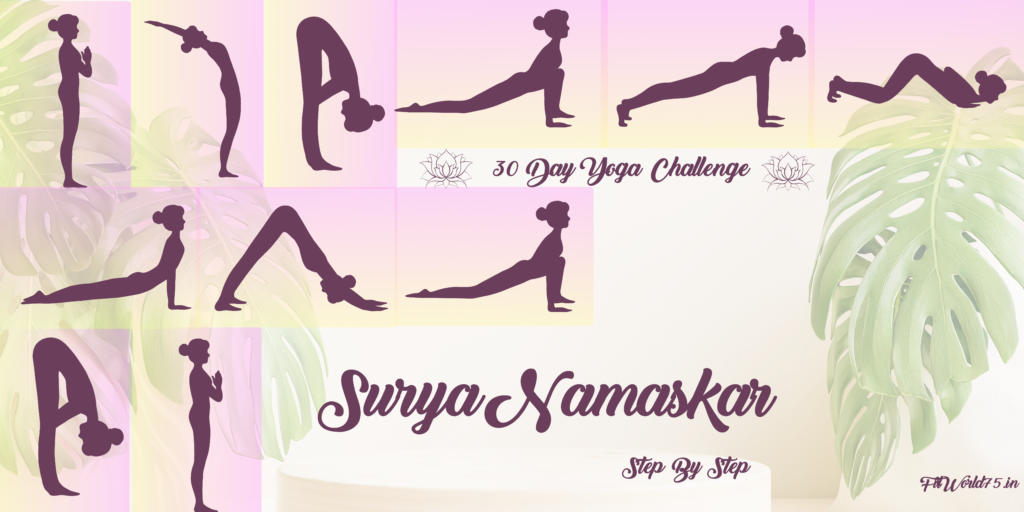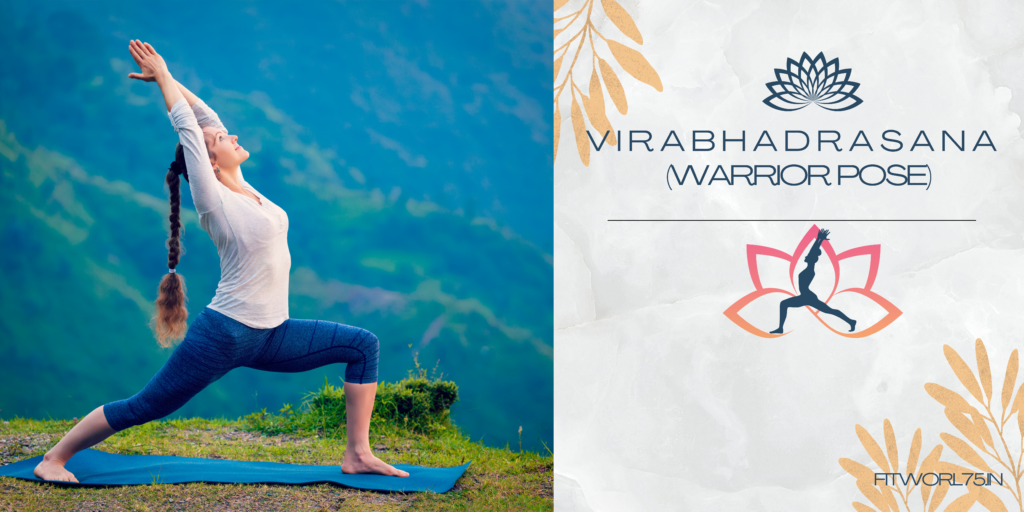Introduction
The ancient practice of yoga has evolved into a widespread craze. Its appeal is the incredible transformation it brings to those who really accept it. The 30 day yoga challenge for beginners in particular is a changing experience that offers multiple physical, psychological, and spiritual benefits.
The Origin of the 30 Day Yoga Challenge
If you go back in time, you’ll see that the idea of a “30 day yoga challenge for beginners” is not unique to yoga. However, it developed an enormous response in the universe of asanas and pranayamas. This challenge acts as an encouragement for people, motivating them to explore their potential, awaken their inner potential, and establish strong bonds within the worldwide yoga community.
Table of Contents
Benefits of the 30 Day Yoga Challenge for Beginners
Physical Transformation: The 30 day yoga challenge for beginners brings forth improved posture, more endurance, and a sense of physical achievement in addition to the appeal of a lean figure.
Mental Wellness and Clarity: A regular practice removes the mind of clutter. Beyond the mat, the serenity acquired penetrates daily life and offers clarity and focus.
Enhanced Flexibility and Strength: This 30-day challenge is more than simply a photo shoot. They emphasize pushing limits in order to develop stronger and more flexible muscles.
Setting the Stage for Success
Your surroundings are vital for starting your trip. It should be peaceful, free of clutter, and appropriate for meditation. A daily programme is equally important. Set aside a particular period to ensure routine. Finally, equip yourself with necessary items like blocks, belts, and yoga mats.
Week 1: The Foundation
The first week sets the tone. It involves being familiar with core postures in order to build a solid foundation. Learning proper breathing methods and realizing their significant relationship to each position are equally important. Introduce meditation, the foundation upon which yoga lies as the week goes on.
Week 2: Dive Deeper
Complexity rises along with familiarity. Teach intermediate poses while making sure that balance and flexibility are still the major goals. The ancient chants termed mantras make their appearance this week, strengthening the practice.
Week 3: Overcoming Plateaus
There will be peaks, both physical and emotional, even over a short period of time like 30 days. The first step is to notice them. These obstacles can be overcome by improving the practice using strategies like stimulating the core, diversifying sequences, or even going back to the basics.
Week 4: Achieving Mastery
The last week is the summit of rigorous labour, self-control, and dedication. While mastery in yoga is a continuous process, the fourth week is all about acknowledging your progress. Furthermore, it’s about keeping the momentum going after the 30 day yoga challenge for beginners.
Diet and Nutrition During the Challenge
The body requires the proper fuel to function well throughout this effort, just like a car does. Choose alkaline, organic, and fresh meals. Understand the value of being hydrated and how water helps muscles to remain flexible. And while we’re talking about diet, learning how Ayurveda and yoga work together may be helpful.
Community and Group Dynamics
While individual practise has advantages, group dynamics can completely alter the situation. Community is developed via group practise, whether it takes place in a real studio or online. It’s a chance to connect, gain knowledge, and develop, with the group energy functioning as an inspiration for personal growth.
Yoga is a holistic approach to health and well-being
Certainly! Yoga is a holistic approach to health and wellbeing, and while it encourages broad harmony and balance, certain asanas (postures) help with calorie burning, muscular toning, and weight reduction particularly. Here are a few powerful yoga poses that are further explained with their advantages and guidelines for weight loss:
1. Surya Namaskar (Sun Salutation)
- Benefits: The whole series of poses benefits the entire body, helping digestion, circulation, and metabolism.
- Steps:

- Pranamasana (Prayer pose)
- Hasta Uttanasana (Raised arms pose)
- Hasta Padasana (Hand to foot pose)
- Ashwa Sanchalanasana (Equestrian pose)
- Dandasana (Stick pose)
- Ashtanga Namaskara (Salute with eight parts)
- Bhujangasana (Cobra pose)
- Adho Mukha Svanasana (Downward dog pose)
- Ashwa Sanchalanasana (Equestrian pose)
- Hasta Padasana (Hand to foot pose)
- Hasta Uttanasana (Raised arms pose)
- Tadasana (Mountain pose)
2. Virabhadrasana (Warrior Pose)
- Benefits: Enhances and tightens the lower back, legs, and arms.
- Steps:

- Hold your feet about four feet apart while standing straight.
- Rotate your left foot inward by roughly 15 degrees and your right foot outward by 90 degrees.
- Stretch your forearms out with your palms facing down, parallel to the ground.
- With your head turned to the right, bend your right knee. Hold before switching sides.
3. Trikonasana (Triangle Pose)
- Benefits: The thighs, waist, and hips are tightened. Benefits in digestion as well.
- Steps:
- Stand straight with your feet wide apart.
- Turn your right foot out to 90 degrees and left foot in by about 15 degrees.
- Stretch your arms out, in line with your shoulders.
- Bend downwards from the hips, with your right hand touching your ankle and left hand pointing upwards.
4. Adho Mukha Svanasana (Downward Dog Pose)
- Benefits: Thighs, back, and arms are all strengthened and shaped.
- Steps:
- Start on your fours, then lift the hips up, straightening the knees and elbows, forming an inverted ‘V’ shape.
5. Setu Bandhasana (Bridge Pose)
- Benefits: Digestion gets better while the back muscles are strengthened.
- Steps:
- Lie flat on your yoga mat, with your feet flat on the floor.
- Exhale and push up, lifting your back off the floor.
6. Bhujangasana (Cobra Pose)
- Benefits: It improves the strength of the shoulders and the entire back.
- Steps:
- Lie face down on the mat with your toes flat.
- Place your hands beneath your shoulders and push up, lifting your waist and chest up.
7. Dhanurasana (Bow Pose)
- Benefits: Strengthens the muscles in the back and the abdomen. Furthermore, the reproductive organs are stimulated.
- Steps:
- To begin, lie on your stomach. Kneel down and grab your ankles with both hands.
- Pull your knees up and back while raising your chest off the ground.
8. Chaturanga Dandasana (Plank Pose)
- Benefits: Strengthens the arms, shoulders, and legs’ muscles. Furthermore, it trains the body ready for harder and harder arm balances.
- Steps:
- Start in a push-up position and hold, ensuring your body forms a straight line from head to heels.
By taking 30 day yoga challenge for beginners, it is feasible to lose weight by incorporating these asanas into your daily routine along with a healthy diet and other types of exercise. A trained yoga instructor should always be consulted to ensure ideal alignment and posture.
Yoga Poses for Stretching:
Yoga stretching asanas benefits in improving posture, flexibility, and relieving muscle stress. Following are comprehensive explanations of some well-known stretching poses:
1. Paschimottanasana (Seated Forward Bend)
- Benefits: Stretches out the hamstrings, shoulders, and spine. Additionally, it assists with digestion.
- Steps:
- Straighten your back and extend your legs out in front of you.
- Exhale as you lift your arms in the air.
- After exhaling, slant your hips forward and reach towards your toes. Keep your spine long.
- Focus on bringing your torso closer to your knees while placing your hands on whatever part of your legs that they can reach.
2. Uttanasana (Standing Forward Bend)
- Benefits: Stretches the hamstrings, calves, and hips. Bolsters the knees and thighs.
- Steps:
- Stand straight in Tadasana (Mountain Pose).
- Exhale, bend forward from the hip joints.
- Allow your palms or fingers to touch the floor beside your feet or grasp your ankles.
- Keep the legs relatively straight.
3. Anjaneyasana (Low Lunge)
- Benefits: Strengthens the legs while strengthening the groin and opening the hips.
- Steps:
- Adho-Mukha Swanasana (Downward Dog Pose) is a good place to start.
- Place your right foot in front of your hands.
- Bring your left knee all the way down.
- Raise your arms upward with your palms facing each other. Lift your chest.
- Continue the opposite side.
4. Baddha Konasana (Bound Angle Pose or Butterfly Pose)
- Benefits: Releases the stress from the knees, groin, and inner thighs by stretching them.
- Steps:
- Sit with your legs straight out in front of you.
- Bend your knees, bringing your heels close to your pelvis.
- Drop your knees to the sides and press the soles of your feet together.
5. Balasana (Child’s Pose)
- Benefits: Relaxes and strengthens the ankles, thighs, and hips.
- Steps:

- Kneel on the floor with your toes together and knees hip-width apart.
- Exhale and lower your torso between your knees.
- Extend your arms alongside your torso with palms facing down.
6. Parighasana (Gate Pose)
- Benefits: Releases the tightness from the hamstrings, spine, waist, and sides of the torso.
- Steps:
- Place your torso upright on the ground while kneeling.
- Straighten out your right leg and extend it out to the side.
- Breathe in and extend your left arm upward.
- While maintaining an extended left arm, exhale and bend to the right, extending the left side of your torso. Put your right hand on the back of your outstretched leg.
- Go back to the beginning position and do the opposite.
7. Marjaryasana-Bitilasana (Cat-Cow Stretch)
- Benefits: The neck area, torso, and back are stretched. Provide the spine a gentle massage.
- Steps:
- Get into a tabletop posture starting on all fours.
- Take a deep breath in and adopt the “Cow Pose,” elevating your head and tailbone to the ceiling.
- Take a deep breath out while doing the cat pose, tucking your chin and tailbone.
These poses concentrate on stretching various body areas to encourage flexibility and relaxation. Before performing these positions, do not forget to warm up, and never push yourself above your discomfort tolerance. It’s vital to practise correct alignment and calm breathing throughout. While performing 30 day yoga challenge for beginners, it is advised to speak with a professional yoga instructor if you’re new to the practise.
Conclusion:
The 30 day yoga challenge for beginners focuses far more than getting in shape. It’s a process of personal development, growth, and transformation. Accept it wholeheartedly and observe how you develop from a yoga zero to a hero.

